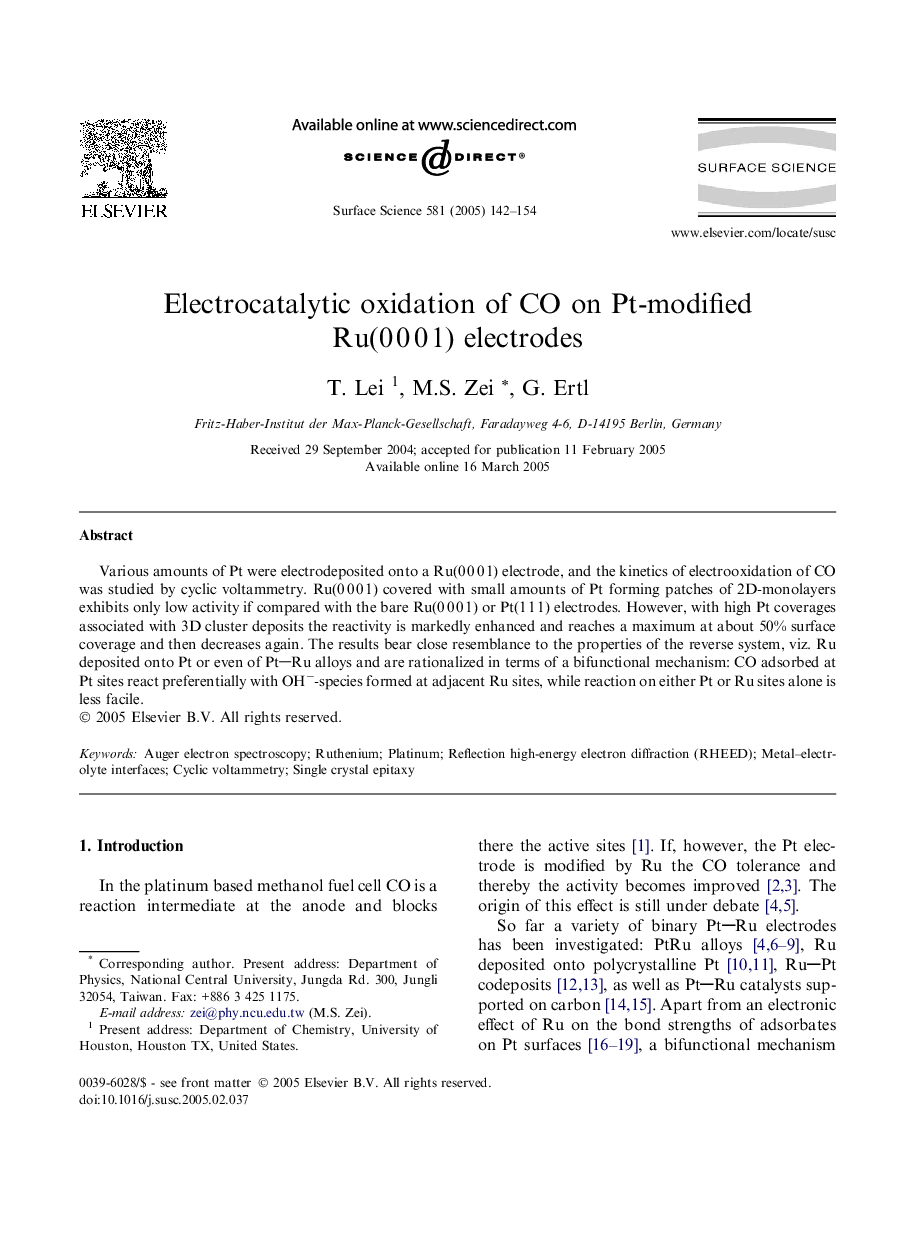| Article ID | Journal | Published Year | Pages | File Type |
|---|---|---|---|---|
| 9594936 | Surface Science | 2005 | 13 Pages |
Abstract
Various amounts of Pt were electrodeposited onto a Ru(0Â 0Â 0Â 1) electrode, and the kinetics of electrooxidation of CO was studied by cyclic voltammetry. Ru(0Â 0Â 0Â 1) covered with small amounts of Pt forming patches of 2D-monolayers exhibits only low activity if compared with the bare Ru(0Â 0Â 0Â 1) or Pt(1Â 1Â 1) electrodes. However, with high Pt coverages associated with 3D cluster deposits the reactivity is markedly enhanced and reaches a maximum at about 50% surface coverage and then decreases again. The results bear close resemblance to the properties of the reverse system, viz. Ru deposited onto Pt or even of PtRu alloys and are rationalized in terms of a bifunctional mechanism: CO adsorbed at Pt sites react preferentially with OHâ-species formed at adjacent Ru sites, while reaction on either Pt or Ru sites alone is less facile.
Keywords
Related Topics
Physical Sciences and Engineering
Chemistry
Physical and Theoretical Chemistry
Authors
T. Lei, M.S. Zei, G. Ertl,
